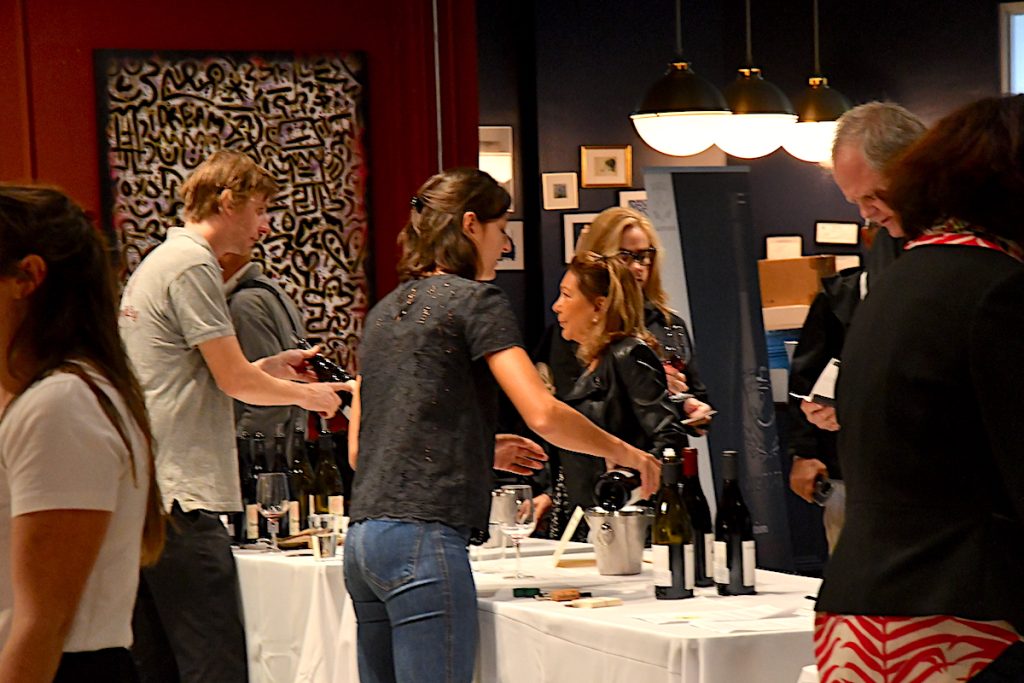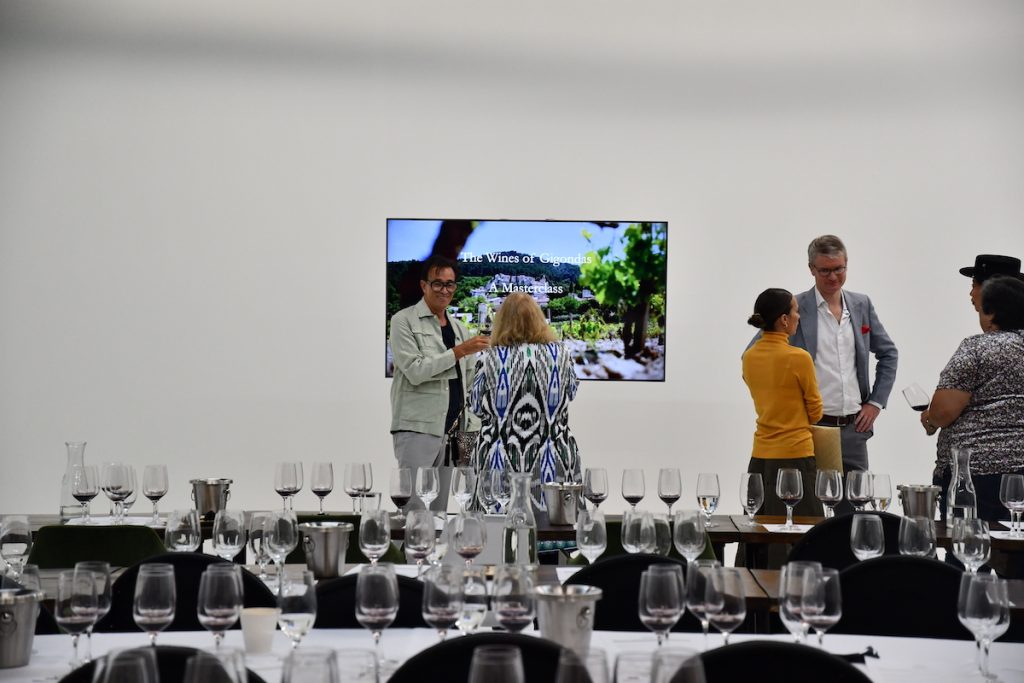It was a stormy day in South Florida with blinding rain and a lot of flooding. However, that did not stop either me or a large group of wine lovers from attending a Gigondas Master Class with Nick Jackson, Master of Wine (MW). I knew that tasting the 2016 vintage and learning from one of the few Masters of Wine in the U.S. and the world, was an opportunity I could not pass up. (Today, there are 414 Masters of Wine working in 31 countries. The title is considered to be one of the highest achievements in the wine industry.)
To begin, a representative from Les Vins de Gigondas Appellation d’Origine Contrôlée (AOC) eloquently offered us a ‘sense of place’.
“Fine wine needs terroir and terroir needs people. People have given an interpretation of their homeland through taste…they hope to give a brief glimpse of eternity.”
Guided Tasting
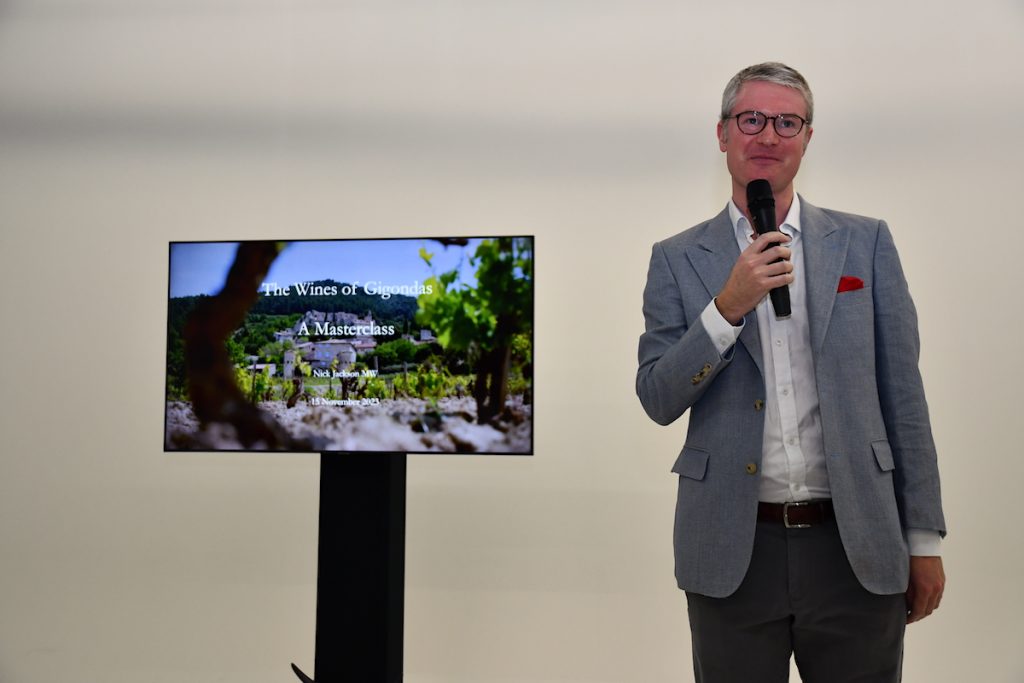
Then, Nick Jackson guided us through six wines from different parts of the region. He noted that the climate attributed to making the 2016 vintage was optimal for producing beautiful wines. These factors were a mild winter followed by a dry spring. Subsequently, there was a small amount of rain before harvest which took place mid-summer.
Through each of these wines, Mr. Jackson painted a picture of a beautiful and unique wine growing area characterized by the Dentelles de Montmirail ridge to the east, Ouvèze river to the west, the Trignon mountain stream to the north, and the hills that extend outwards from the Dentelles.
Gigondas Terroir
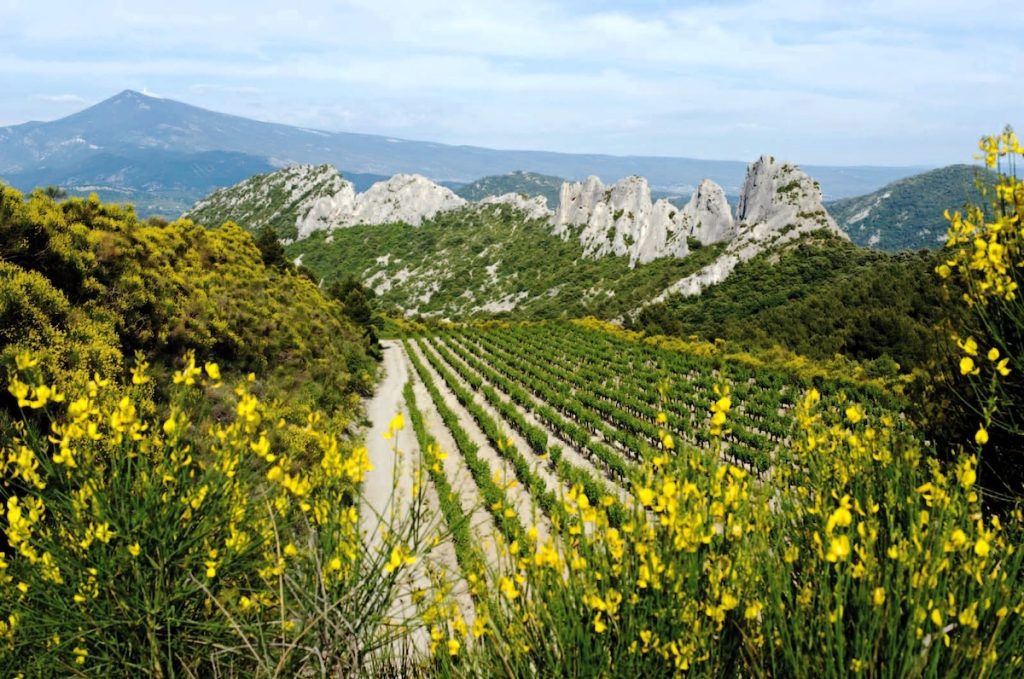
There is something stately and mysterious about the Dentelle’s whitish-grey, jagged peaks. However, beyond this scenic majesty, their role is key when defining Gigondas’ unique terroir. The Dentelles cause breezes to rise and fall, softening the peaks in temperature. Thus, vines with a west or northwest aspect, are provided with the perfect airflows. This factor tempers the excessive heat typical of southern Rhône and instills Gigondas wines with smoothness and acidity, giving them excellent ageability.
As a wine student, I still have to develop a deeper understanding of ‘terroir’ and how different geological factors impact the nose of the wine and its taste. However, I gained significant insights from Mr. Jackson that were easily understandable. For example, he called limestone the “secret sauce” that adds structure. It was then that I understood why it is so important to visit the wine regions. What’s in your glass becomes an even greater teachable moment because you see, ‘taste’, and smell the air and soil that factors into the final work of art!
Grenache is King
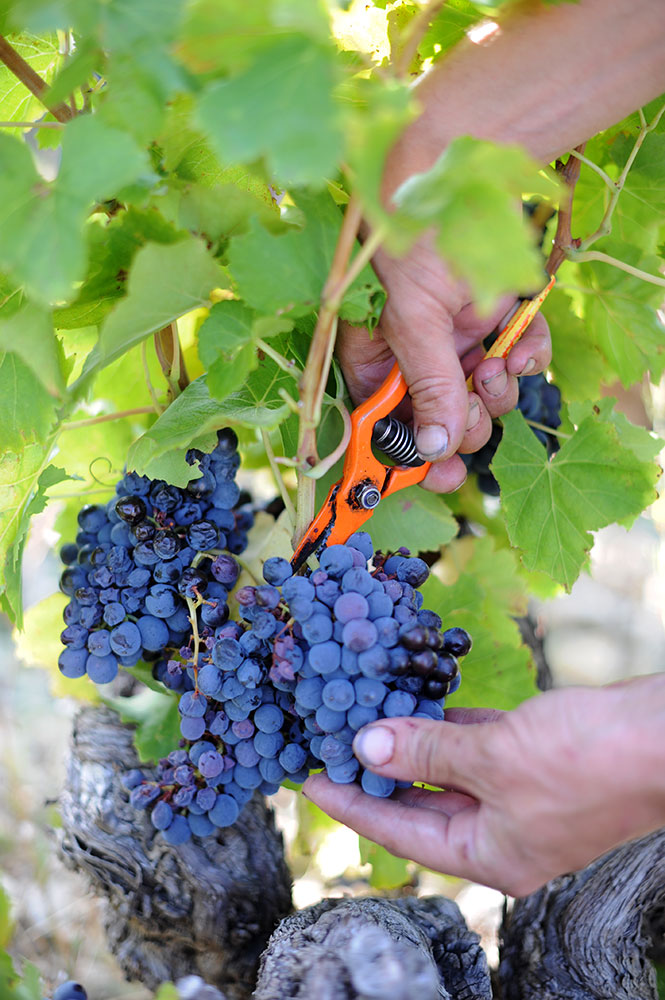
Gigondas wines must be made up of at least 50% Grenache. Of the other grapes found in some of these wines, Syrah and Mourvèdre (and in one case, Cinsault), Mr. Jackson explained what each gave to the wine. In particular, I found it interesting to learn more what Mourvèdre’s adds to the blend. He said, “Mourvèdre becomes mellow with age. It needs more time for the savory tannins to settle down and integrate with the juiciness of the Grenache.”
A couple of the wines came from grapes on old vines. He explained, “old vines mean concentrated fruit, and are savory and herbal.” The use of old oak rather than new is also important. He commented, “None of these wines see new oak, therefore you compare like-for-like” [and get a] riper, sweeter, red fruit profile.” And concluded, “why add the ‘sweetness’ [i.e. vanilla] from oak?”
Interpretation Left Up to Us
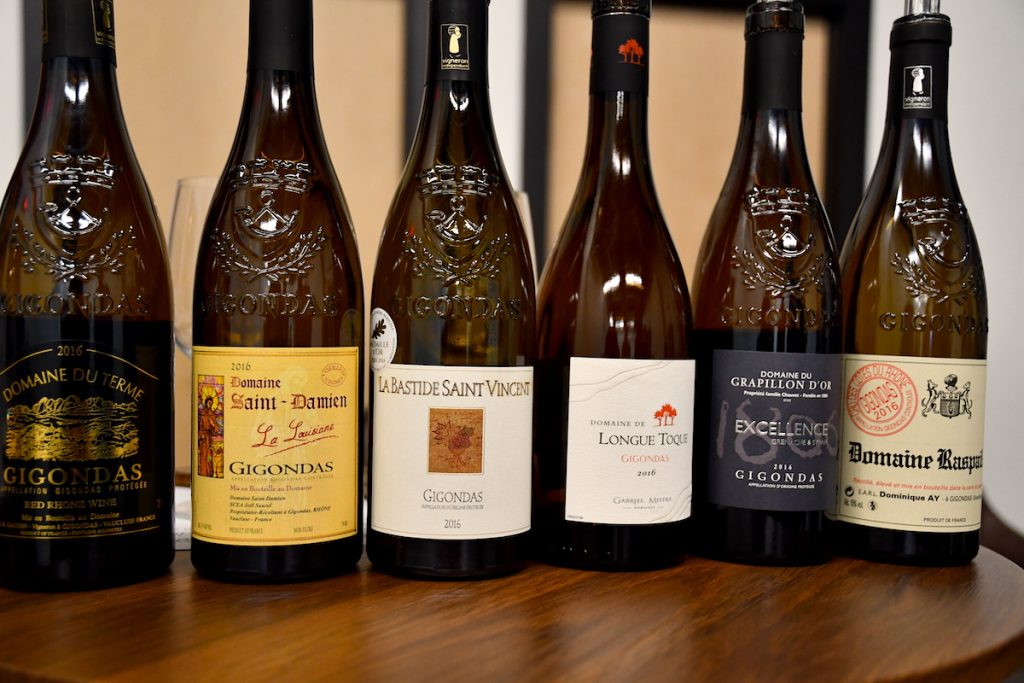
While Mr. Jackson explained the grape blend and percentage, aging method, and terroir, he was more curious to know what we thought about each wine, rather than give his interpretation or opinion. This allowed me to freely explore what was on the nose and palate, while dreaming up the perfect pairing!
Here are the Gigondas Wines from the 2016 vintage that we tried:
- Domaine du Terme
- Saint-Damien, Louisiane
- La Bastide Saint Vincent
- Maison Gabriel Meffre, Domaine de Longue Toque
- Domaine du Grapillon d’Or, Cuvée Excellence
- Domaine Raspail-Ay
Following the Master Class, guests were invited to try more wines from other GIgondas AOC producers at a walkaround tasting.
A Few Facts & Figures
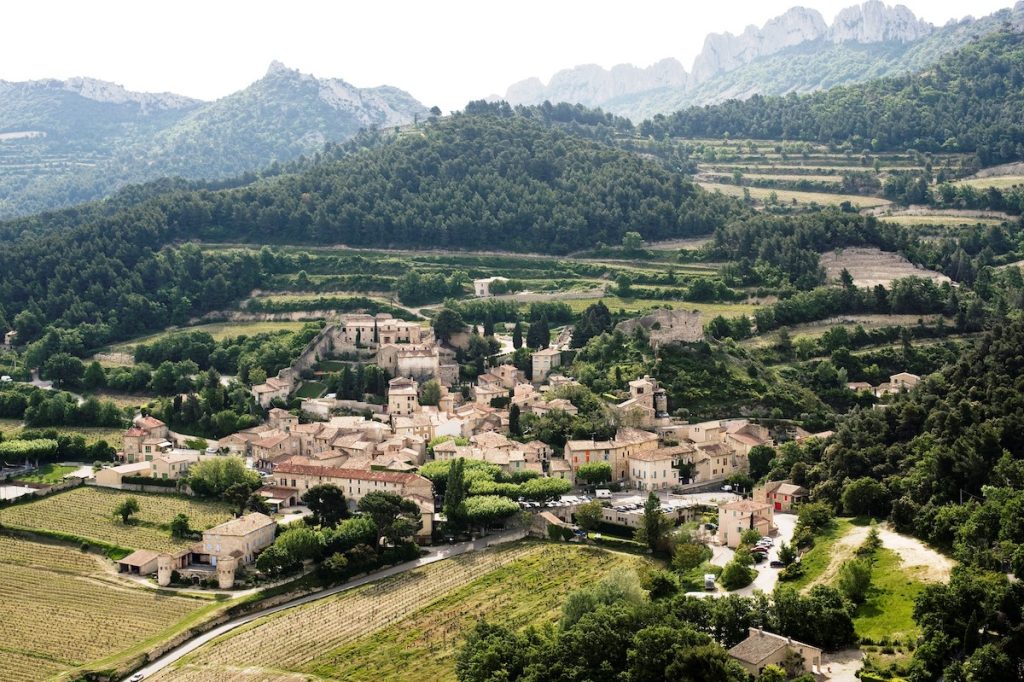
Gigondas has 1195 ha area under vine; produces 99% red wines and 1% rosé. There are 220 wine growers and in 2021, the AOC produced 33,236 hl.
Find Your Sense of Place
Wine is a marvelous experience where the gifts of the earth, man’s ingenuity, and our senses meet. While I can easily dream up a fall pairing menu, any of these 2016 selections will suffice as my quintessential, ‘curl up in front of the fireplace’ wine. (By the way, I live in Florida, but have a great imagination!)
It is through wine and these educational experiences that I find my ‘sense of place’. I hope you do too. Cheers to the red wine season!
Discover Les Vins de Gigondas
Thanks to Les Vins de Gigondas for the invitation to the Master Class at Ampersand Studios in Miami. Learn more about the appellation and its 200+ winemakers by visiting www.gigondas-vin.com/en/.
